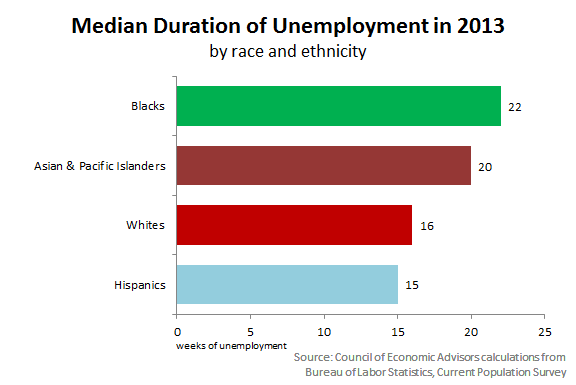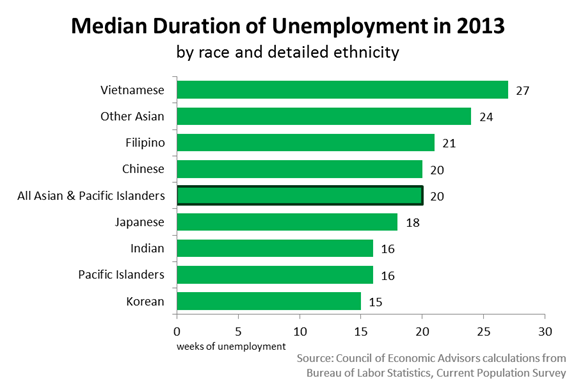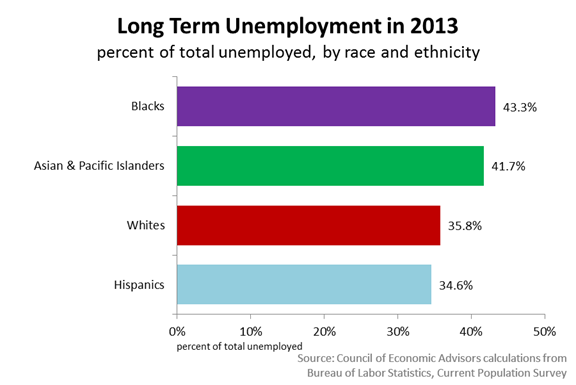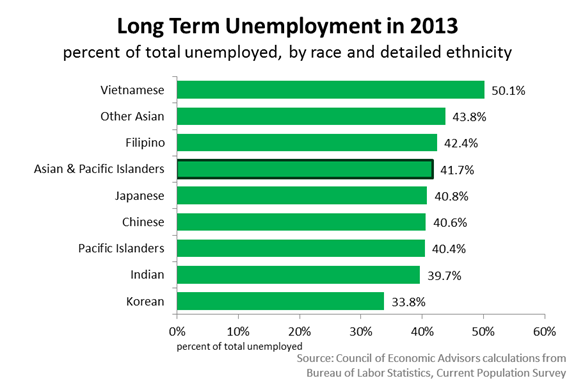
Ed. note: This is cross-posted on the U.S. Department of Labor blog. See the original post here.
As part of our commemoration of Asian-Pacific American Heritage Month, the department has been sharing the latest data highlighting the status of Asian-American and Pacific Islanders in our nation’s labor market.
Secretary Perez kicked off the blog series by talking about the overall employment situation for AAPI communities, and Deputy Secretary Chris Lu followed with a discussion on the importance of expanding opportunities through education for AAPIs. I’m turning to a topic that doesn’t get much attention – AAPIs, when facing unemployment, tend to remain unemployed for a long time.
Asian-Americans, as a group, have the lowest unemployment rate (5.2 percent in 2013) compared to the nation as a whole (7.4 percent in 2013). This fact may mask the challenges Asian-Americans experience when faced with unemployment. While Asians are less likely to be unemployed, those who are face longer durations of unemployment (20 weeks) compared to whites (16 weeks) or Hispanics (15 weeks).


AAPIs belong to a diverse community where the impact of unemployment varies broadly depending on the country of origin, among other factors. The median duration of unemployment for Korean-Americans is 15 weeks, while the median duration of unemployment for Vietnamese-Americans is 27 weeks. Vietnamese are closely followed by “Other Asians,” which includes smaller Asian populations like Laotians, Cambodians, Bangladeshis, Pakistanis, Hmong, Burmese and Nepalese.
More troublesome is that AAPIs are also more likely to join the ranks of the long-term unemployed compared to either whites or Hispanics.


Addressing the challenges of unemployment, and long-term unemployment in particular, continues to be a top priority for the Labor Department. Earlier this year, Secretary Perez joined President Obama in announced $150 million in grants through the Ready to Work Partnership to support and expand innovative public-private partnerships that are helping the long term unemployed individuals get back to work. These grants will build on the efforts to help the long term unemployed available through the On-the-Job Training National Emergency Grants.
The department also offers variety of employment and training options through the Workforce Investment Act and the Unemployment Insurance programs, including tools to help the unemployed create their own businesses through the Self-Employment Assistance initiative. These are just a few of our programs we have to help AAPIs overcome unemployment challenges.
This month is an opportunity to celebrate our communities’ many successes, but it should also be a time to reflect on the challenges that continue to persist. As we address the issue of long-term unemployment across the country, we will ensure these programs are accessible to all communities in need.
Portia Wu is the assistant secretary of labor for employment and training.

